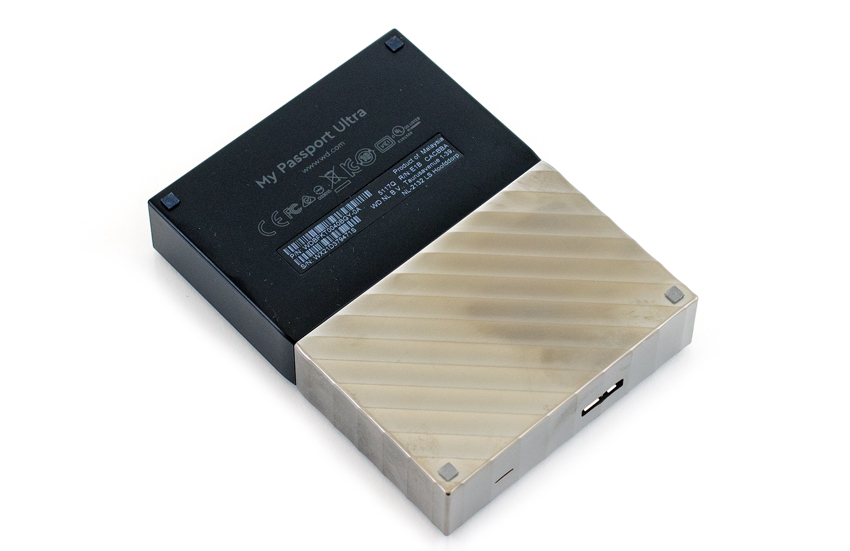MacOS High Sierra Issues Formatting NTFS Partitioned External Drives
/I've recently been approached by a number of folks who like using portable hard drives for travel and for their photo libraries for their laptops who have been unable to prepare the drives with an Apple file system and partition. Here's the fix.
Up until High Sierra, all you had to do was launch Disk Utility and partition the external disk as HFS+ Journaled. It was fast and easy. Something in High Sierra broke this completely and while Apple has not fixed this yet, Arthur Gareginyan over at mycyberuniverse.com posted a fix back in October. It's clean and brilliant. Here's the link to his post.
His article is very comprehensive and well worth reading for the technically minded. I commended him on his post and do so again, because Apple still has not addressed the issue as of this writing.
What happens is that Disk Utility reports that there is not enough space on your new blank drive. This is obviously erroneous and is due to a bug in MediaKit, Apple's way of dealing with media. What has changed is that in High Sierra, Apple has finally delivered the long promised successor to HFS+ in with a new file system APFS. This is actually a very good thing, unfortunately it chokes when dealing with an NTFS prepared volume. Most external drives that comes ready to go have been prepared by the manufacturer to be immediately used on Windows due to pure market penetration. MacOS can read from NTFS but does not write to it without extra software. Mac users actually WANT to use APFS not NTFS.
The steps to make your drive APFS are documented in Arthur's post but I will list the steps here. Note that this work must be done in Terminal with an administrator level account.
1. Open Terminal
2. At the command prompt enter "diskutil list" without the quotes and press return.
You will see output that looks something like this
/dev/disk0 (internal, physical):
#: TYPE NAME SIZE IDENTIFIER
0: GUID_partition_scheme *121.3 GB disk0
1: EFI EFI 209.7 MB disk0s1
2: Apple_APFS Container disk1 121.1 GB disk0s2
/dev/disk1 (synthesized):
#: TYPE NAME SIZE IDENTIFIER
0: APFS Container Scheme - +121.1 GB disk1
Physical Store disk0s2
1: APFS Volume Macintosh HD 105.9 GB disk1s1
2: APFS Volume Preboot 20.3 MB disk1s2
3: APFS Volume Recovery 519.9 MB disk1s3
4: APFS Volume VM 3.2 GB disk1s4
/dev/disk2 (external, physical):
#: TYPE NAME SIZE IDENTIFIER
0: GUID_partition_scheme *4000 GB diskn
1: EFI EFI 209.7 MB disk2s1
This will provide a list of disks on your system. You are looking for the disk that does not have an HFS+ or APFS partition already on it. Typically this will identified as diskn where n represents a number.
Our next step is to ensure that this disk is unmounted.
3. At the command prompt enter the following without the quotes and press return "diskutil unmountDisk force diskn" where you REPLACE diskn with the name of the disk found in step #2
You will see output that looks like this
Forced unmount of all volumes on diskn was successful
Next we will write zeros across the entire disk. This is a destructive process so you want to be certain that the disk identifier you are using is the correct one.
4. At the command prompt enter the following without the quotes and press return "sudo dd if=/dev/zero of=/dev/rdiskn bs=1024 count=1024" where you REPLACE diskn with r plus the name of the disk found in step #2
You will be asked for your password and will see output that looks like this
Password:
1024+0 records in
1024+0 records out
1048576 bytes transferred in 0.890086 secs (1178062 bytes/sec)
Now we need to partition this disk to HFS+ to make it fully usable by the Macintosh
5. At the command prompt enter the following without the opening and closing quotes and press return "diskutil partitionDisk disk2 GPT JHFS+ "mydiskname" 0g" Be sure to replace mydiskname with whatever you want to call this disk. If you forget you can rename it later, but best to get it done here.
You will see output something like this;
Started partitioning on diskn
Unmounting disk
Creating the partition map
Waiting for partitions to activate
Formatting diskns2 as Mac OS Extended (Journaled) with name Elements
Initialized /dev/rdiskns2 as a 4000 GB case-insensitive HFS Plus volume with a 57344k journal
Mounting disk
Could not mount diskns2 after erase
Finished partitioning on diskn
/dev/diskn (external, physical):
#: TYPE NAME SIZE IDENTIFIER
0: GUID_partition_scheme *4000 GB diskn
1: EFI EFI 209.7 MB diskns1
2: Apple_HFS mydiskname 3999.8 GB diskns2
The disk is now partitioned for HFS+. To complete the process, launch Disk Utility and repartition the disk for APFS. Done!
I realize that this looks a bit complex and if you are not comfortable working in terminal, contact an Apple qualified service technician or Mac guru in your community. The process does not take all that long, about 15 minutes for a 4TB external drive.
If you do not want this hassle, some drive makers deliver external drives prepared for Macintosh at the factory. These will be HFS+ volumes of course, and sadly often carry a higher price tag for no good reason at all.
Have an idea for an article or tutorial? Do you have a question photo or video unrelated to this article? Send me an email directly at ross@thephotovideoguy.ca or post in the comments.
If you find the podcast, video or articles of value, consider clicking the Donation tab in the sidebar of the website and buy me a coffee. Your donation goes to help me keep things going. Email your questions on any photo or video topic and I will try to respond within a day.
I'm Ross Chevalier, thanks for reading, watching and listening and until next time, peace.









